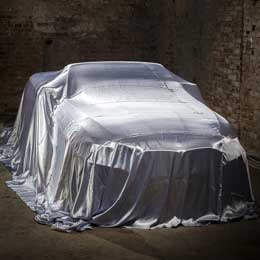 If you live in the Midwest, you probably noticed a flurry of activity in your neighborhood. Neighbors are busy raking leaves, preparing their patio furniture for winter, and bringing in hose reels.
If you live in the Midwest, you probably noticed a flurry of activity in your neighborhood. Neighbors are busy raking leaves, preparing their patio furniture for winter, and bringing in hose reels.
If you have a fun summer car and don’t want it to see winter road salt, now is the time to prepare it for winter storage. Unfortunately, the pleasantly warm temperatures are probably gone until next spring.
Here are some tips to help you prepare your “fun car” collector or antique for winter storage.
1. Select an appropriate storage location.
Where you store your car is important. If you have the room to keep it in your garage, that’s ideal. If not, look for a secure storage facility. If you store it in an old barn, be extra careful about where you place it. Holes in walls are a friendly invitation for rodents seeking shelter. In addition, you don’t want to store it under loosely hanging tools or other equipment. Go with your gut. If it doesn’t feel right, pick a different location.
2. Talk to your insurance agent.
Please remember to talk about your insurance needs with your agent. They can recommend appropriate coverages for your storage situation. If you have a West Bend policy and are storing a private passenger vehicle, you can remove collision coverage. Comprehensive coverage must stay on the car. Comprehensive coverage protects against losses caused by fire, theft, vandalism, falling objects, and natural disasters such as tornados. If your car is an antique or collector, West Bend keeps full coverage (collision and comprehensive) on the vehicle. West Bend’s rates reflect that the car isn’t driven all year round. The benefit of this is the elimination of insurance processing in spring and fall, and it protects you in case you decide to take the car out on a nice day during the off-season months.
3. Give it a bath.
Before you decide to store it, spend some time cleaning the exterior. Pay particular attention to insect remnants, bird droppings, and tree sap. You definitely want to get those off the paint. Also, give it a nice coat of wax to top it off.
4. Remove garbage from the interior.
If your entire family enjoys your fun car, more than likely, there’s garbage in it. Remove the soda cups and candy wrappers. Leaving trash in the car can attract rodents during the winter months.
5. Keep the rodents out.
I know several people who have had rodents turn their car into a winter getaway leading to unanticipated car repairs in spring. Cover areas of the car where a mouse could get in, especially your exhaust pipe or air intake valve. Consider using steel wool, a cloth, or aluminum foil. Consider laying down mothballs or a rodent repellant on the outside of the car. If you have pets, use caution. You may want to use an ultrasonic rodent repeller that emits an ultrasonic frequency to keep the pesky critters away.
6. Add fuel stabilizer.
Gas can break down over time and cause damage to your carburetor or fuel injection components. Adding a fuel stabilizer, such as STA-BIL, the breakdown can be prevented and gas can be kept fresh for up to a year. Once the fuel stabilizer has been added, drive the car so it can get mixed into the fuel system.
7. Let it be.
Once your car is stored for the winter, there’s no need to start it. Here are a few reasons why you should leave it be.
- Letting your car idle can be harmful due to condensation buildup.
- You may not have proper insurance coverage if you take it out for a drive.
- Road salt lingers. It usually takes a good rain to clean off the roadway.
8. Keep your tires properly inflated.
Tires should be inflated during regular driving based on the placard inside the driver’s side door. When storing your car for the winter, the tires should be inflated to the maximum PSI rating on the tire’s sidewall.
9. Remove your battery.
Unused batteries will lose their charge over time. Remove your battery and store it in a safe dry location. Consider buying a trickle charger to keep your battery in good working condition during the winter months.
Do you have any suggestions or information you’d like to share? I’d love to hear from you. Please share them in the box below.
Sources:
http://autorepair.about.com/od/glossary/fl/Use-a-Fuel-Stabilizer-for-Winter-Car-Storage.htm
http://www.edmunds.com/car-care/how-to-prep-your-car-for-long-term-storage.html
This article is intended for general educational and illustrative purposes only and should not be construed to communicate legal or professional advice. Further, this article is not an offer to sell insurance. Please consult with your licensed insurance agent for specific coverage details and your insurance eligibility. All policies are subject to the terms, conditions, limitations, definitions, and exclusions contained therein.





